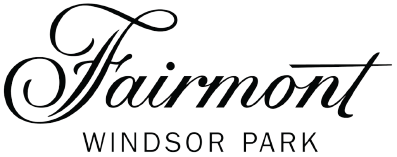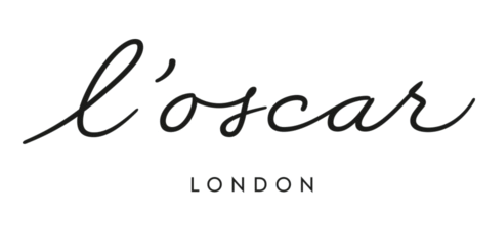
In times of financial uncertainty, many people choose to invest in tangible assets, with art being a primary example. However, if you’ve never purchased art, it can be daunting to take the first steps when investing in art. There is plenty to consider when investing in art, from the benefits to the types of art to invest in.
This is something we can help with at Grove Gallery. Read on for our beginner’s guide to investing in art. In this blog, we’ll be letting you know some of the most important things you should consider when you’re beginning your art investment journey and starting your art collection.
Understand The Benefits of Art Investment
Before you start purchasing works of art, it’s a good idea to understand the benefits of art investments. There are many benefits to investing in fine art, the most prominent of which is that art is a long-term investment.
Other investment opportunities, for example, real estate and the stock market, are prone to drastic fluctuations and can be hugely impacted during times of financial uncertainty. Art investments, however, remain a secure and steady investment with the potential for substantial returns, sometimes reaching millions of dollars.
In fact, art can act as a hedge against inflation as it can preserve its value during times of economic difficulty. Another benefit of art investing is that it is something you can enjoy, unlike other investments such as stocks and shares.
Art is tangible—something you can appreciate. You can frame a piece of artwork in your home and enjoy it for years to come before selling it for a solid profit.
As well as being an effective and stable way of generating profit, art has cultural, social, intellectual, and, of course, aesthetic value too.
Choose The Type of Art to Invest In:
There are several types of artwork that you can invest in to add to your art collection. Choosing the right type of art to invest in is one of the most important decisions you will make when you start investing in art.
First of all, you have the Old Masters. Old Masters typically refers to paintings by prominent European artists produced between 1300 and 1830. The Old Masters include artworks spanning from the Renaissance period right through to early modernism.
Old Masters artwork is typically displayed in the world’s most prestigious museums and art galleries; it is likely that you studied this type of artwork in history classes or art at school. Michelangelo, Leonardo da Vinci, and Rembrandt are just a few names you may be familiar with.
This category of artwork includes the most valuable, rare, and sought-after pieces of art in the world, as well as the most difficult to source, whether you’re a beginner or an experienced art collector. Another option when purchasing artwork is blue-chip art (art made by more well-known artists whose pieces tend to become more valuable over time).
You may be wondering what the term ‘blue-chip art’ means well, the term derives from blue-chip stocks, referring to companies with a track record of generating profit. Blue-chip artwork includes work by prominent artists who are well-known in the industry. Blue-chip artists have a history of creating artwork that increases in value and sells for high amounts at art auctions and in galleries.
Some prominent blue-chip artists include Picasso, Warhol, and Banksy—artists that produce pieces with a timeless cultural appeal. Blue-chip art may not cost as much as Old Masters; however, a piece of blue-chip art typically sells for upwards of £10,000. Another type of art to consider investing in is contemporary art from new and emerging artists.
Art from up-and-coming artists who haven’t cemented their name in the industry yet is typically much more affordable, and there is a chance of gaining a large profit further down the line; however, it can be riskier, as they’re a new face in the market. However, this type of art investment for your investment portfolio typically comes with a higher risk for beginners; if you don’t know much about the art world, it can be difficult to determine which pieces will be more likely to increase in value.
It would be best if you also considered whether you’re looking for primary or secondary art. The primary art market generally involves purchasing art directly from the artist; it refers to art that has not been sold before.
The secondary art market, however, refers to art that has a history—art that has been sold and resold in the past.
Consider Where You’ll Source The Art:
When you’re looking to buy your first piece of art, you should consider where you’re going to purchase the art from. You can invest in art in several ways to start your journey as an art investor, including art galleries, art fairs, and art auctions.
Art galleries are a great way to invest in art. At an art gallery, you can not only view pieces of art up close but also enquire about the artist and the piece you’re interested in.
Likewise, you can attend an art auction (at an auction house, for example) and bid on a piece of art that you’re drawn to. Art auctions generally include pieces of art from the secondary market. Art fairs can also include secondary pieces but also have plenty of quality primary pieces from emerging artists as well as prints and originals from known names in the industry.
Buying art online is also an option. We have a helpful blog that can give you all the information you need about online art investment; check it out here.
Get An Expert Opinion:
As a beginner, the art market can be difficult to navigate; for example, you may struggle to determine whether a piece of art is worth the sale price, or you may not know much about the artist. Research is extremely important when investing in art; however, research alone may not be enough to find out more about how art is a good investment.
At Grove Gallery, we are home to an expert art advisory service. Whether you’re new to the art world or you’re a seasoned art collector, an art advisor is certainly something to utilise.
Our experts can share their wealth of knowledge and experience to give you the best chance of a successful investment. We can help you find the right long-term investment or short-term investment and show you how to generate, on average, 8% to 12% from art investments annually, guiding you through the process from start to finish.
Our expert support doesn’t end once you’ve purchased a piece; we can also guide you through the art-selling process, helping you make a serious profit. To learn more about art investments, check out our helpful blog post outlining everything you need to know about art investments.
Explore our London gallery today, or contact us at 020 8103 4905. Our team is more than happy to help you with any questions you may have.






